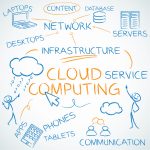Eight Best Practices to Combat Ransomware:
Ransomware is a type of malicious software that can infect computer systems and encrypt critical files or data, effectively locking them until a ransom is paid. To protect your company from ransomware attacks, here are some best practices to consider:
- Regularly Back Up Your Data: Ensure that your company’s critical data is regularly backed up, encrypted, and stored both onsite and off-site in secure locations. This can help you quickly recover data in case of an attack and reduce the likelihood of paying a ransom if you are successfully attacked.
- Do Test Restores: Regularly do test restores of your local and remote backups to ensure everything works as planned and there are no unpleasant surprises when you need to recover data.
- Keep Software Up to Date: Regularly update your company’s software and operating systems to ensure that known vulnerabilities are patched and cannot be exploited by attackers.
- Use Anti-Malware: Use anti-malware software on all workstations and servers, scan regularly and ensure the anti-malware software is up to date.
- Implement Firewalls: Firewalls act as a barrier between an internal network and the Internet, or other external networks, to prevent unauthorized access, protect against cyber threats and protect against malware.
- Implement Security Awareness Training: Educate your employees on how to identify and avoid phishing emails and other common attack vectors. Train employees to recognize suspicious links, emails, and attachments, and to report them to IT personnel immediately.
- Implement a Security Plan: Develop and implement a comprehensive security plan that includes regular testing, monitoring, and updating of security measures. Ensure that your plan covers all aspects of your company’s IT infrastructure and includes procedures for incident response, recovery, and communication with stakeholders.
- Use Multi-Factor Authentication: Implement multi-factor authentication (MFA) for access to your company’s applications, systems, and services. This will add an effective extra layer of protection against unauthorized access.
By implementing these best practices, you can help reduce the likelihood of a ransomware attack on your company and minimize the impact of an attack if one does occur. E&A is here to help with any cybersecurity and ransomware mitigation questions you may have.

